Reviews
GOG Release Brings Unchanged Original ‘Resident Evil’ Experience to Modern PCs [Review]

While Silent Hill has always been my horror franchise of choice, there are few things that give me a more intense Pavlovian response than the voice saying “RESIDENT EVIL” on the title screen of that game. The PlayStation era was an important step into video games evolving into something more cinematic, and Resident Evil was a big part of that for me.
Just six years later, Capcom remade the game into, in my opinion, one of the greatest survival horror games of all time, which is the version of the game that’s been most easily available today. While you can play the original Resident Evil through the PlayStation Plus classics catalog, it’s been unavailable for purchase on modern consoles and PC operating systems.
Recently, GOG finally brought a port of the 1996 original to the PC via their store, letting players easily get their hands on this piece of gaming history.

This new release of Resident Evil is a fantastic piece of game preservation, leaving the original title exactly as it was upon release. From all reports, this appears to be the original uncensored PC release, modified to work on modern operating systems. The gameplay itself runs exactly as it did before without issue, but the prerendered and live action cutscenes are a bit choppy, which was an issue present in the original PC version. This release is so unchanged that I actually had to do a quick internet search to even figure out how to quit the game (it’s F9, by the way), which was mentioned in the game manual but not in the game itself.
So how exactly does that feel in 2024? Game development has come a long way in the past 28 years, but it’s very easy to see how the game’s design choices led to it being so influential. The level design of the mansion, with its slowly unlocking shortcuts and interconnectedness, set the standard for the subgenre that’s still emulated to this day. It’s a joy to get around the mansion and slowly uncover its secrets throughout. The combat is clunky and the tank controls take a bit of getting used to, but the game designs encounters around it. It’s less about the precise aiming of Resident Evil 4 and more about resource management as you figure out which enemies to kill and which ones to leave as nuisances to maneuver around. The story is still a wonderful b-movie level thrill, complete with the famously bad dialog and corny voice acting that make it feel so unique.
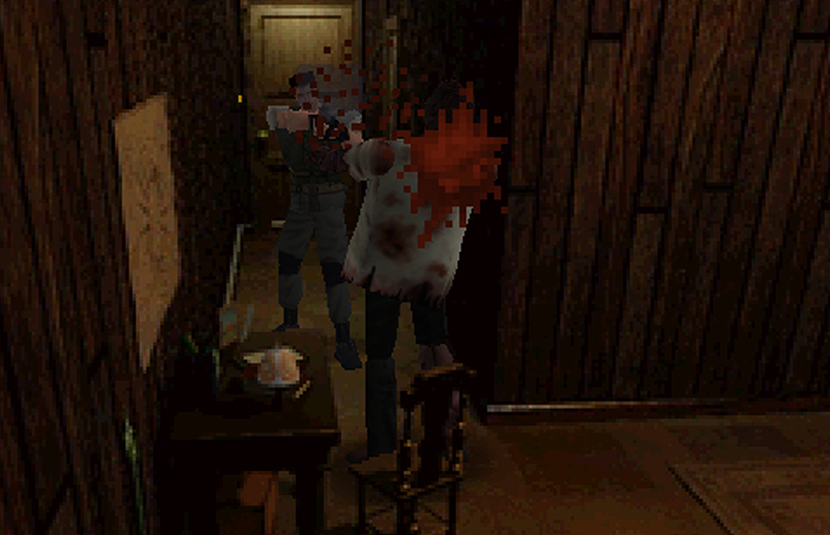
There are definitely a lot of things that are going to be harder for modern audiences to deal with, if you’re coming to this game for the first time. The limited inventory space is something that a lot of people find irritating, especially when it forces you to do a ton of backtracking to ensure that you’ve got the correct items to solve a puzzle or enough ammo to take out a hallway of zombies. There are many times that I didn’t bring a healing herb because I needed the space for pieces to a puzzle, which ended up biting me in the ass after getting unexpectedly grabbed by a zombie.
In a world where autosaving is the norm, it was also a bit hard for me to readjust to the save system, which requires the use of ink ribbons. You really need to calculate when it’s worth using one of the save items, and a wrong choice and bad luck can end up costing you a lot of time redoing things. It’s also slightly annoying to me how much time it takes to go into the save room, grab my ink ribbons from storage, save, then remember to put the ink ribbons back before leaving. I like the tension and the friction that comes from having to make informed decisions about saving, but modern games have spoiled me a bit to the point where if I have to redo more than 15 min of a game after dying I get a little frustrated.
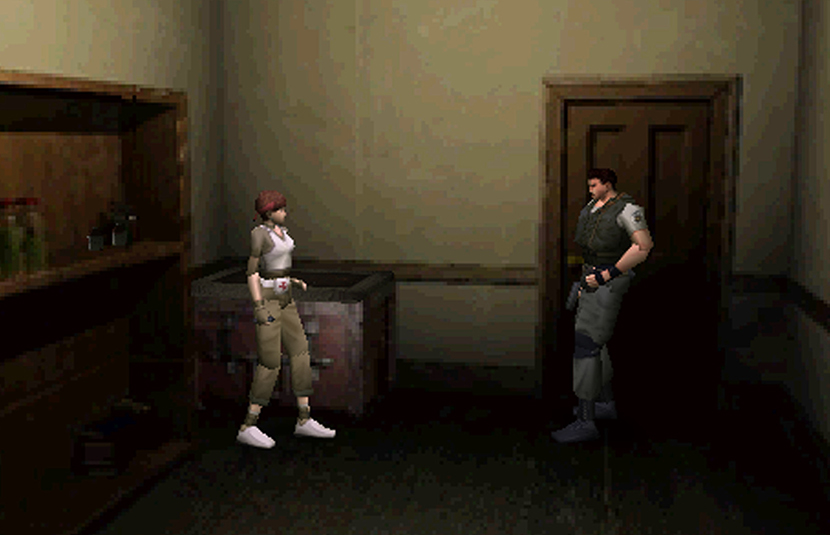
I’ve been playing through some of the Final Fantasy Pixel Remasters that Square has released, and they make the smart decision of retaining the original gameplay experience, while also having optional settings you can tweak for quality of life. In those games, you can add XP multipliers to reduce grinding, turn off random encounters, or just get more money from fights. It’s easy to think of settings that they could have included in this Resident Evil rerelease, had they not chosen to do a straight up unchanged port of the game. I would kill for a save anywhere feature that you find on emulators (the way most modern audiences were probably playing the original game), and there could have been options for damage multipliers that would make it easier for people to make it through the story.
Just this year, Crow Country, which was heavy inspired by RE, released with a story mode that removed the threat of death to allow you to focus on the story and puzzles of the game. While that might not completely work in an RE rerelease, some variation of this to make the focus less on danger and more on experience would be welcomed as an option. The nice things about features like this are that they don’t erase the original experience, instead creating another way to play it for new player who are having trouble adjusting to the older style of play or people replaying it who have already beaten it in its original form and just want a more frictionless experience for a replay. These are the types of features that modders have been adding to the original PC releases for years, so it’s a little bit of a bummer that Capcom and GOG did not follow suit in at least some of these.

Another question you may be asking with this rerelease: why should I play this instead of the 2002 remake that’s also easily available? While I do think that the remake is overall a better experience, there is an amazing amount of charm the original game brings to the table. I have a huge fondness for the fixed-camera PS1 style, with the static backgrounds that the chunky polygonal characters navigate around, and Resident Evil is a prime example of that visual style. The remake may look “better,” but it’s hard to deny the amount of personality they were able to convey with what they were working with on the original PlayStation. I also think the live action cutscenes, complete with the corny character introductions, do such an amazing job to set the tone of the game in a way that isn’t matched by the prerendered sequences in the remake.
Since I grew up playing Resident Evil when it came out, it’s hard to decouple nostalgia from my reaction to this rerelease. I still think that the original Resident Evil, as presented in the GOG version, is an exceptional example of level design that creates a compelling space to explore full of perfectly escalating thrills that are made more tense by a clever focus on resource and inventory management. While I do wish that more quality of life features were added to this release, it’s an astonishing win for game preservation, making one of the most important games of the last 30 years easier to access than ever. As Capcom continues to focus on remaking Resident Evil games, I’m glad they are still respecting their history by making this available. Resident Evil 2 and 3 are both coming later this year (and can be preordered as part of a bundle with this game), so hopefully this is successful and other companies are able to follow suit in making some of their PS1-era classics easy to purchase for the masses.

Reviews
‘Hell Hole’ Review – A Scrappy Creature Feature with Humor and Heavy Metal Attitude

The Adams Family, an actual family unit of filmmakers comprised of father John Adams, mother Tobey Poser, and their daughters, quickly established a punk rock DIY spirit, wearing multiple hats each on films The Deeper You Dig, Hellbender, and last year’s Where the Devil Roams. That continues in their latest, Hell Hole, an ambitious ode to the classic creature feature. It’s not the gory creature effects that elevate a classic setup in this scrappy effort, though it certainly helps. It’s the way the Adams Family stretch their creative muscles further, opting for a fun, zany creature feature with a heavy metal attitude and dry humor.
Hell Hole opens in an unexpected place: Serbian territory in 1814, where French soldiers fighting for Napoleon Bonaparte (including one played by Subspecies‘ Anders Hove) are starving and desperate for food. A gift horse is literally trotted out to them by a mysterious woman, who leaves them to their doom as something soon erupts from the animal in a gory fashion. Cut to the present, where the area is now the site of an American-led fracking operation led by Emily (Tobey Poser).
We’re introduced to Emily’s sarcastic but tough-as-nails style of leadership as well as her team, which includes John (John Adams), Teddy (Max Portman), Nikola (Aleksandar Trmčić), and Sofija (Olivera Peruničić), the latter of whom are more environmentalists assigned to keep watch and advise on and prioritize conservation efforts. That comes in handy when the team unearths a dormant parasite that awakens and becomes determined to find a new host.
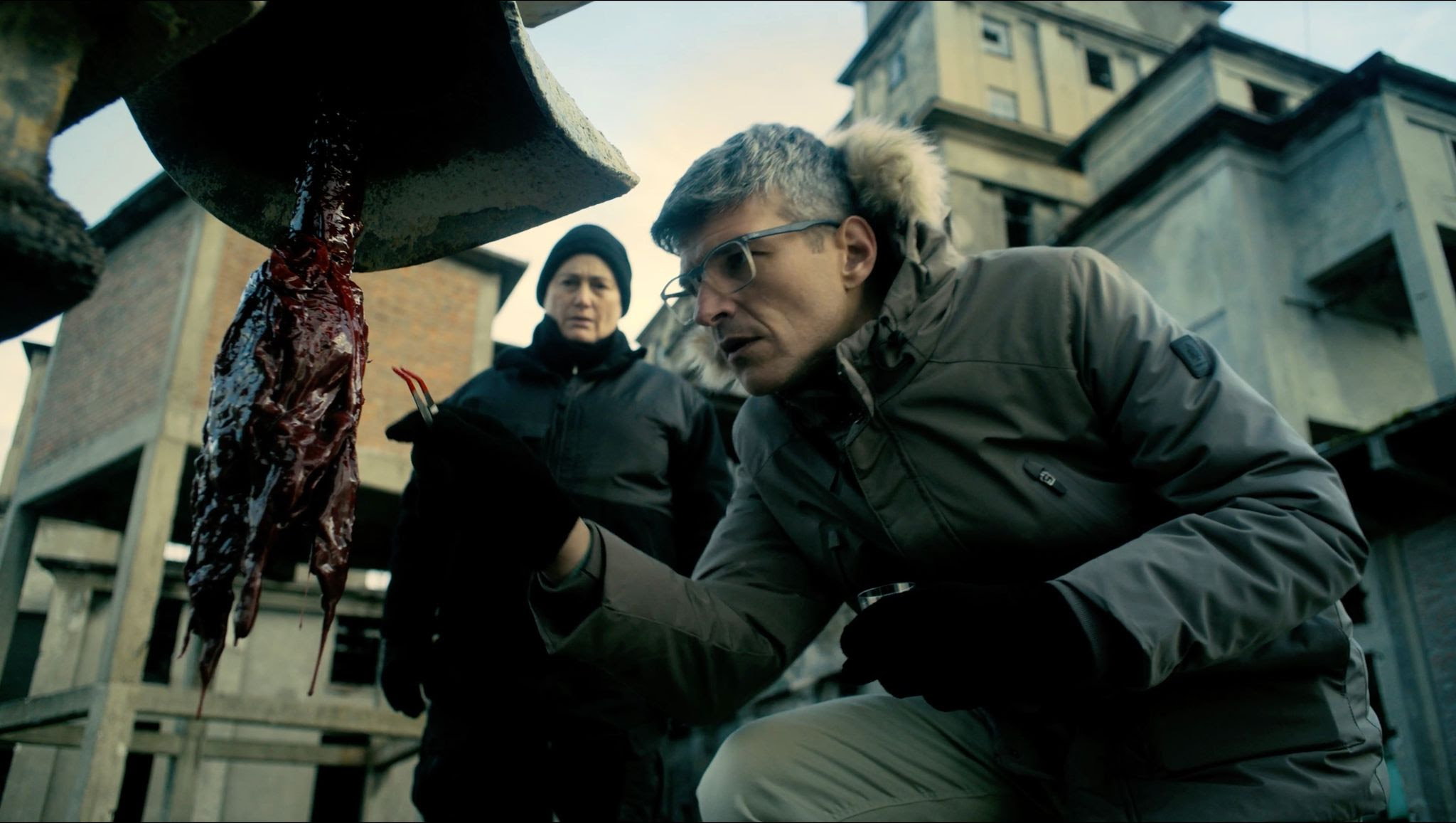
It’s the precise type of setup that calls to mind films like The Thing, yet it quickly becomes apparent that the Adams Family is more interested in riffing on the classics than adhering to them. To start, their tentacled creature has a rather hysterical means of bodily invasion; man is the warmest place to hide, after all. Adams, Adams, and Poser’s script does mine this particular aspect of the creature’s behavior for all its humor, and the filmmakers find amusing ways to keep track of the creature’s current whereabouts. Instead of instilling a palpable sense of paranoia at a mysterious, carnivorous species in their midst, Hell Hole instead mines the scenario for gory horror laughs.
John Adams and Tobey Poser, who wrote the screenplay with daughter Lulu Adams, also star in the film, with Adams composing the film’s guitar-heavy score. Adams also edits the film, drawing inspiration from his heavy rock score as scene transitions look and sound like a music video. All of this is to say that their DIY ethos is still every bit on display, injecting a lot of personality even when the production design leans into the sparseness of the drill site. The sparse visuals let the creature effects take center stage, and the Adams Family has enlisted some impressive talent for that. SFX legend Todd Masters (“From,” Tales from the Crypt: Demon Knight) and his MastersFX team handled the mollusk-like entity’s designs and effects, with Adams Family collaborator Trey Lindsay handling visual effects and stop motion animation.

More than just splattering buckets of blood everywhere and creating tentacled mayhem, this creature has personality. When the bulk of the dig crew is designated fodder, usually in the most bumbling way for our entertainment, Hell Hole lets its exasperated entity blow off steam and play. It’s preposterous, and it knows it, riffing on everything from over-the-top exposition dumps to making the most asinine choices when faced with a killer parasite. The Adams Family grounds it all with a razor-sharp character in Emily, darkly sweet views on parenthood, and wry commentary on everything from environmentalism to American exceptionalism.
Hell Hole is another scrappy, DIY love letter to the genre from the Adams Family. It’s a punk rock ode to the creature feature, one that intentionally honors its warts, too. While the budgetary constraints and relentlessly dry sense of humor would polarize in lesser hands, here, it’s an asset and part of the film’s overall charm. The Adams Family gets playful, delivering a gory, squirm-inducing creature feature that plays more like an ultra-violent workplace comedy.
Hell Hole premiered at the Fantasia International Film Festival and releases on Shudder on August 23, 2024.


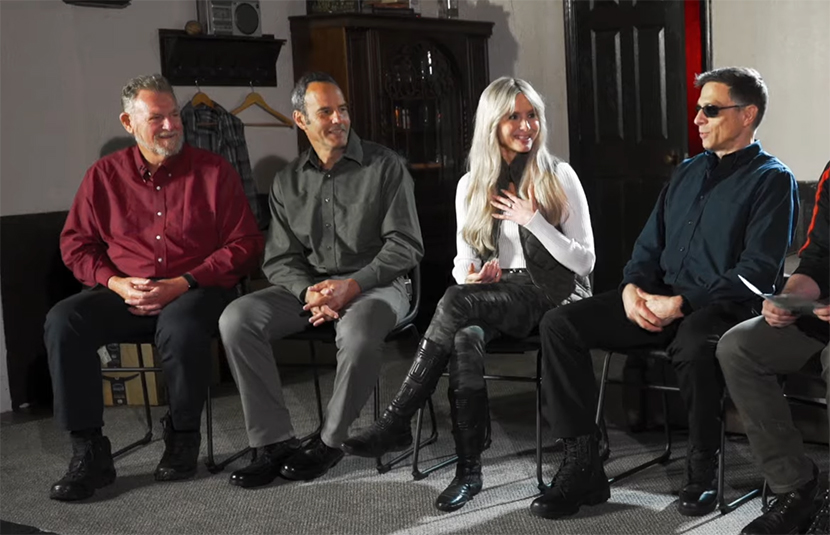

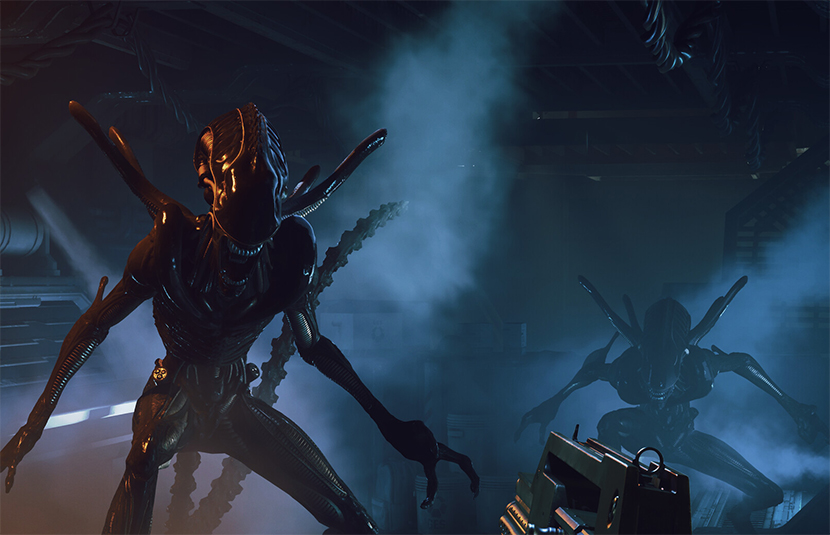

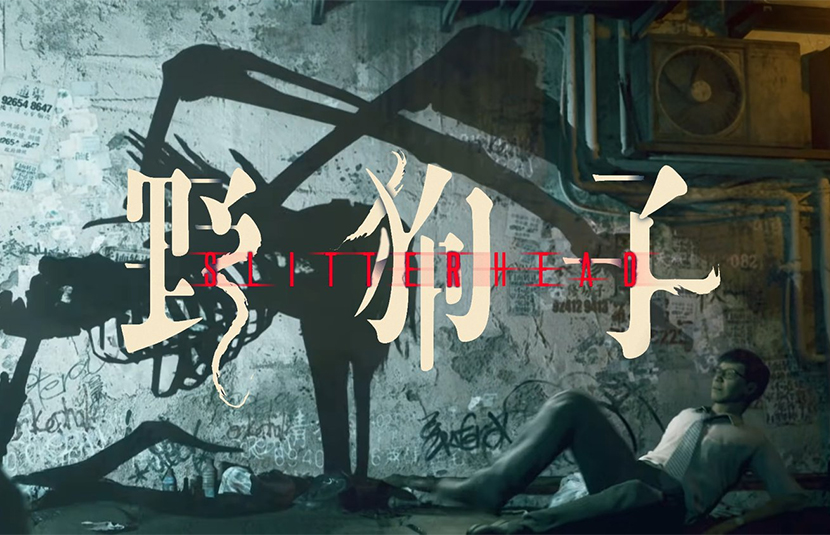


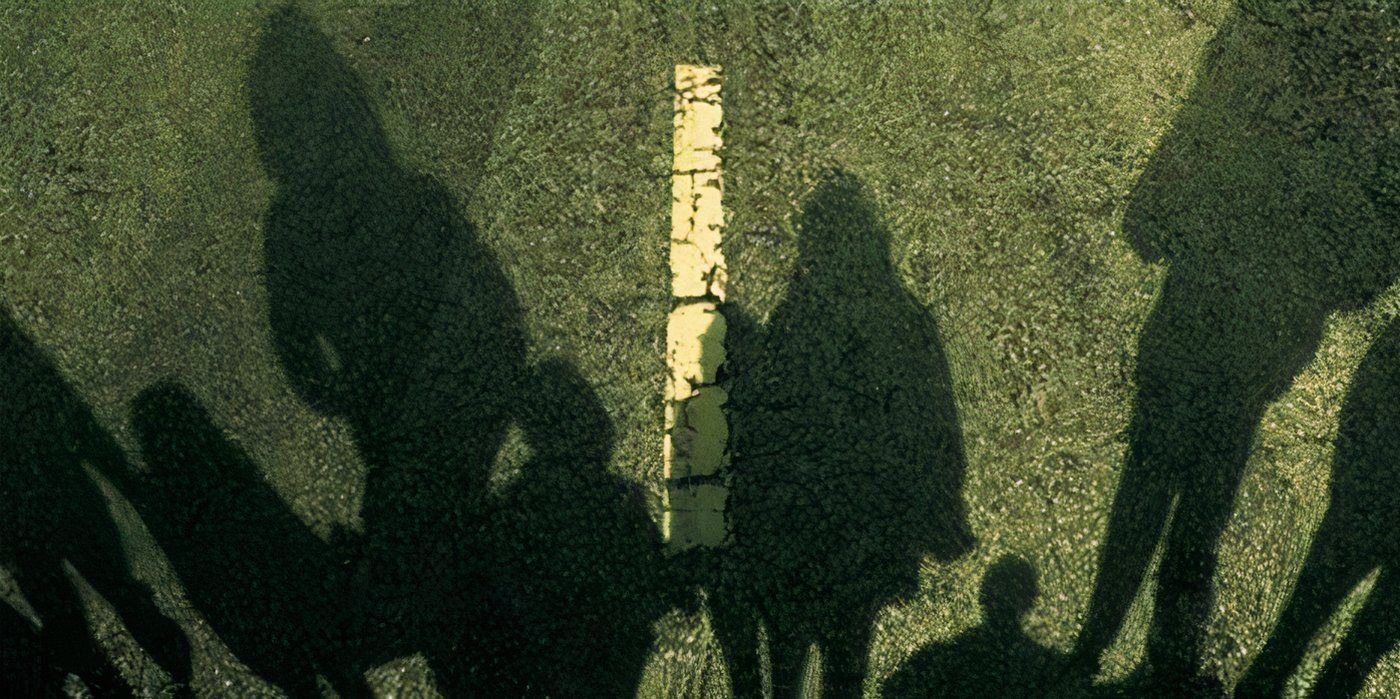



You must be logged in to post a comment.